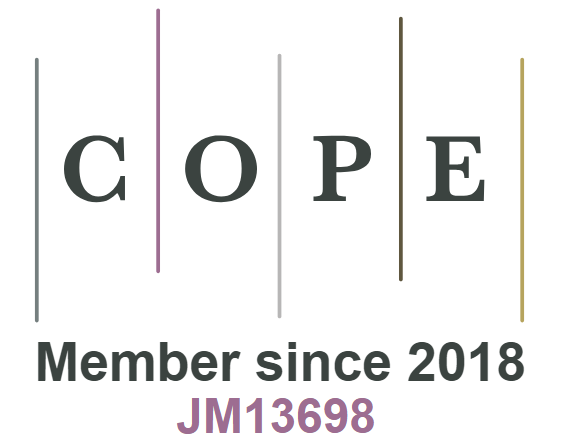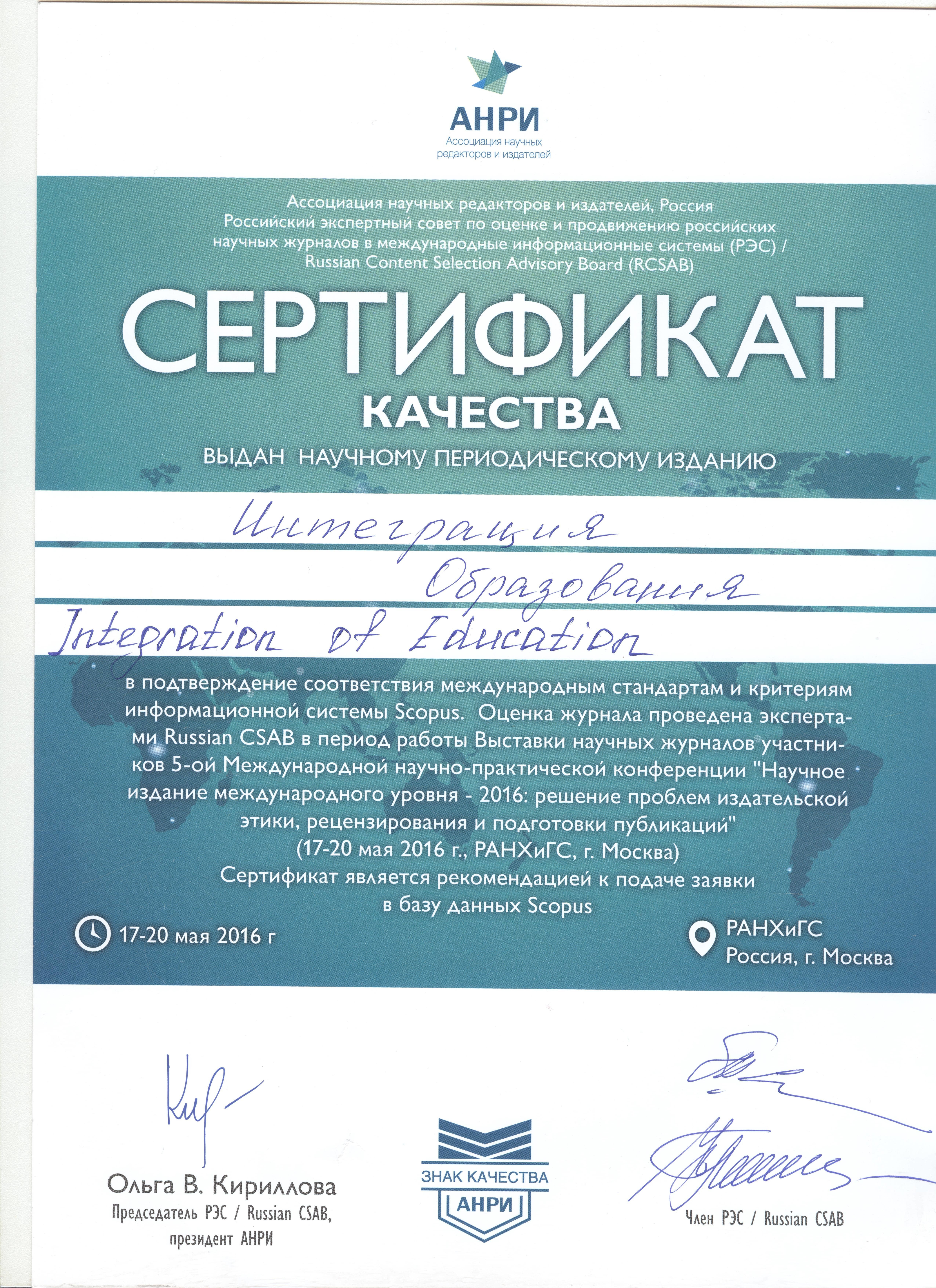UDK 159.923.3-057.87
DOI: 10.15507/1991-9468.096.023.201903.390-403
Dynamics of Personality Trait Structuring During Student Transition to Secondary School
Nikolay S. Kolishev
Teacher of Departament for Information, Qualification and Training, University of Shumen “Episkop K. Preslavski” (1 doctor Boris Bozhkov St., Varna 9010, Bulgaria), Dr. Sci. (Pedagogy), Professor, ORCID: https://orcid.org/0000-0002-5863-4642, Researcher ID: В-7889-2019, This email address is being protected from spambots. You need JavaScript enabled to view it.
Elena V. Slavutskaya
Professor of Psychology and Social Pedagogic Department, Chuvash I. Yakovlev State Pedagogical University (38 K. Marks St., Cheboksary 428000, Russia), Dr. Sci. (Phychology) ORCID: https://orcid.org/0000-0002-3759-6288, Researcher ID: Q-7031-2018, This email address is being protected from spambots. You need JavaScript enabled to view it.
Leonid A. Slavutskii
Professor of Automatics and Control Department, I. N. Ulianov Chuvash State University (15 Moskovskiy Prospect, Cheboksary 428015, Russia), Dr. Sci. (Phys.-Math.), ORCID: https://orcid.org/0000-0001-6783-2985, Scopus ID: 6506214782, Researcher ID: M-6976-2018, This email address is being protected from spambots. You need JavaScript enabled to view it.
Introduction. A longitudinal study of children’s mental development in the period of transition to secondary school (aged 9 to 14) was carried out in order to quantitatively analyse dynamics in the structuring of students’ personal traits. The need to develop a systematic approach to the description of transition periods in psychosocial development determines the relevance of the paper. The purpose of the article is to report on the study that confirm the need to consider pre-adolescence (preteen) in terms of a distinct transition period (including pre-adolescent crisis) in mental development between primary school age and adolescence.
Materials and Methods. Psychological testing was conducted using the 12 and 14 Cattell’s Personality Factor Questionnaire (12PF, 14PF) and the Culture Fair Intelligence Test with the participating schoolchildren from the end of the third until the beginning of sixth grade and in eighth grade involving between 127 (3rd grade) and 66 students (8th grade). For data processing, factor analysis was used for the entire sample of respondents, as well as following their stratification by IQ an d gender.
Results. It is shown that, for the studied age range, the relationship between personality traits varies both qualitatively and quantitatively. General regularities in the structuring of cross-functional relationships that differentiate children of different sex and IQ level were found. The “stabilising combination” of the personal qualities for children under dynamic (non-equilibrium) psychosocial development is identified, the temporal boundaries of the preteen crisis marked obtained in the experim ent.
Discussion and Conclusion. The study of the dynamics of psychosocial development in the transition period on the basis of the study of cross-functional relationships structuring can be an effective tool for the analysis and creation of dynamic (non-equilibrium) models. The obtained quantitative results reveal the time frame and features of the transition period, as well as demonstrating the manifestation of the basic principles of mental development: systemic integration/differentiation and anticipation. The revealed features of the developmental dynamics of students should be considered in the preparation of curricula, as well as in when providing psychological and pedagogical support to students.
Keywords: personality trait, dynamics of development, age crisis, schoolchildren of pre-adolescence, transition to the secondary school, integro-dif ferential approach
For citation: Kolishev N.S., Slavutskaya E.V., Slavutskii L.A. Dynamics of Personality Trait Structuring During Student Transition to Secondary School. Integratsiya obrazovaniya = Integration of Education. 2019; 23(3):390-403. DOI: https://doi.org/10.15507/1991-9468.096.023.201903.390-403
Contributions of the authors:
Nikolay S. Kolishev – consulting; analysis of the results at al l stages of the study.
Elena V. Slavutskaya – scientific management; setting tasks; choosing methods and conducting an experiment; informative description and interpretation of data; formulation of the results.
Leonid A. Slavutskii – selection of software; mathematical processing and presentation of the results.
All authors have read and approved the final manuscript.
Submitted 24.05.2019; revised 02.07.2019; published online 30.09.2019.

This work is licensed under a Creative Commons Attribution 4.0 License.





























